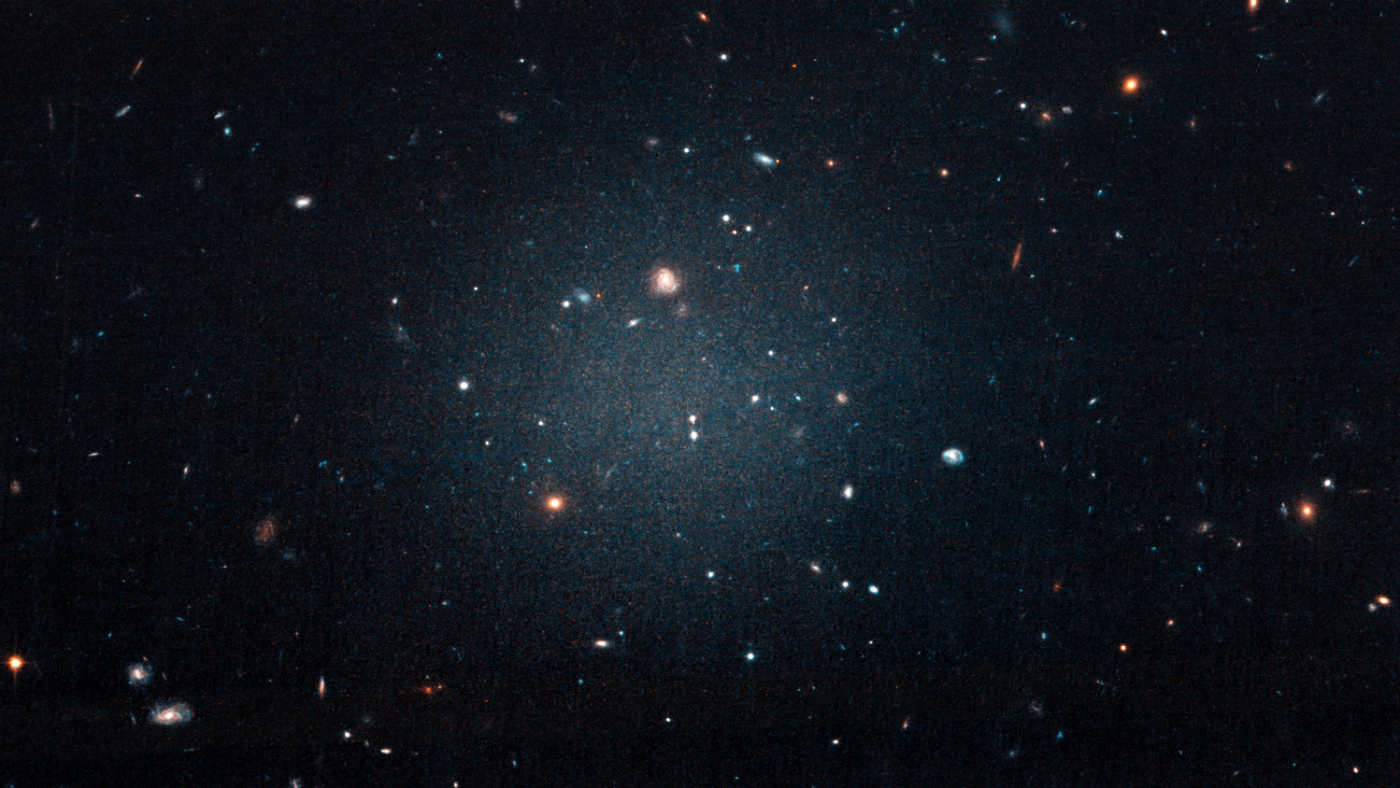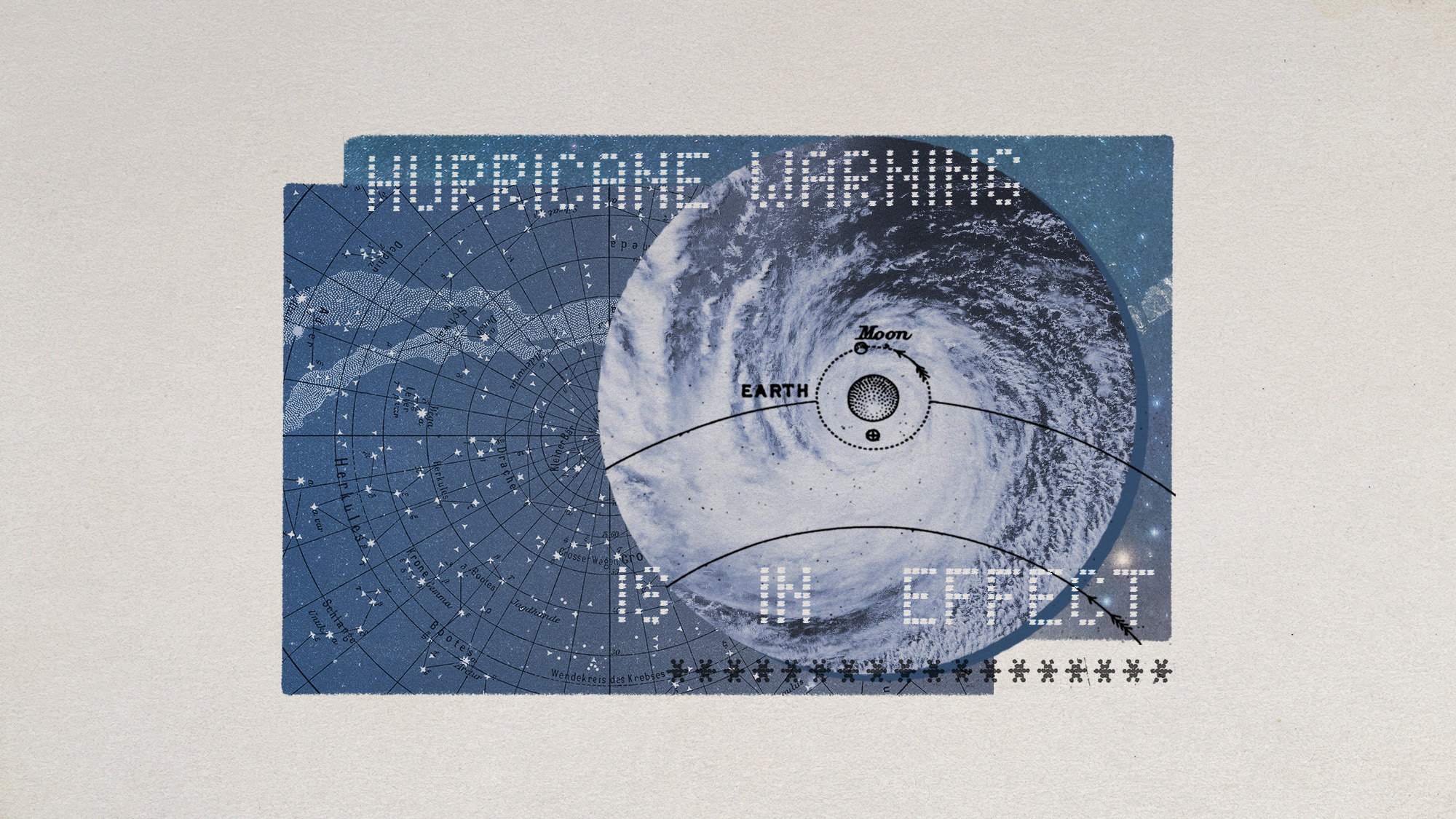Galaxy without dark matter challenges scientific theories
NGC1052-DF2 appears to be lacking the mysterious substance

Scientists are baffled after discovering the existence of an “unusually transparent” galaxy that appears to contain no dark matter.
The “ghost” galaxy, known as NGC1052-DF2, is some 65 million light-years away and about the size of the Milky Way. And according to a new study published in the journal Nature, it contains no more than 1/400th of the amount of dark matter that astronomers had expected.
“The absence of dark matter from a small patch of sky might appear to be a non-problem, given that astronomers have never directly observed dark matter anywhere,” says The Guardian.
The Week
Escape your echo chamber. Get the facts behind the news, plus analysis from multiple perspectives.

Sign up for The Week's Free Newsletters
From our morning news briefing to a weekly Good News Newsletter, get the best of The Week delivered directly to your inbox.
From our morning news briefing to a weekly Good News Newsletter, get the best of The Week delivered directly to your inbox.
However, the newspaper continues, most current theories of the physics of the universe suggest that where regular matter is found, dark matter must also be present, with the latter dominating at a ratio of 5:1.
As it has greater mass than normal matter, dark matter is believed to be vital in holding the necessary gas together while galaxies are forming, explains the BBC.
“In other words, no dark matter, no galaxy,” says National Geographic.
The discovery of an apparent exception to that rule, NGC1052-DF2, therefore poses major questions about our understanding of the universe.
A free daily email with the biggest news stories of the day – and the best features from TheWeek.com
“Finding a galaxy without dark matter is unexpected, because this invisible, mysterious substance is the most dominant aspect of any galaxy,” said lead study author Pieter van Dokkum, from Yale University. “Something like this has never been seen. NGC1052-DF2 challenges the standard ideas of how we think galaxies form.”
A team from the Connecticut-based university used the Hubble Space Telescope to closely observe the galaxy, measuring its distance from Earth and looking at the star clusters within.
“I spent an hour just staring at the Hubble image," said van Dokkum, the Nasa website reports. “It’s so rare, particularly these days after so many years of Hubble, that you get an image of something and you say, ‘I’ve never seen that before.’
“This thing is astonishing: a gigantic blob that you can look through. It’s so sparse that you see all of the galaxies behind it. It is literally a see-through galaxy.”
-
 Critics’ choice: The year’s top 10 movies
Critics’ choice: The year’s top 10 moviesFeature ‘One Battle After Another’ and ‘It Was Just an Accident’ stand out
-
 The small Caribbean island courting crypto billions
The small Caribbean island courting crypto billionsUnder the Radar Crypto mogul Olivier Janssens plans to create a libertarian utopia on Nevis
-
 Political cartoons for December 21
Political cartoons for December 21Cartoons Sunday’s political cartoons include Christmas movies, AI sermons, and more
-
 Blue Origin launches Mars probes in NASA debut
Blue Origin launches Mars probes in NASA debutSpeed Read The New Glenn rocket is carrying small twin spacecraft toward Mars as part of NASA’s Escapade mission
-
 ‘The Big Crunch’: why science is divided over the future of the universe
‘The Big Crunch’: why science is divided over the future of the universeThe Explainer New study upends the prevailing theory about dark matter and says it is weakening
-
 The moon is rusting
The moon is rustingUnder the radar The Earth is likely to blame
-
 Panspermia: the theory that life was sent to Earth by aliens
Panspermia: the theory that life was sent to Earth by aliensUnder The Radar New findings have resurfaced an old, controversial idea
-
 Africa could become the next frontier for space programs
Africa could become the next frontier for space programsThe Explainer China and the US are both working on space applications for Africa
-
 Hurricanes are not exclusive to Earth. They can happen in space.
Hurricanes are not exclusive to Earth. They can happen in space.Under the radar These storms may cause navigational problems
-
 Answers to how life on Earth began could be stuck on Mars
Answers to how life on Earth began could be stuck on MarsUnder the Radar Donald Trump plans to scrap Nasa's Mars Sample Return mission – stranding test tubes on the Red Planet and ceding potentially valuable information to China
-
 The treasure trove of platinum on the moon
The treasure trove of platinum on the moonUnder the radar This kind of bounty could lead to commercial exploitation